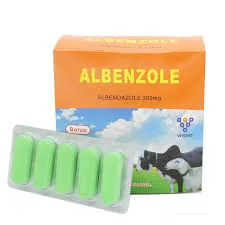- Afrikaans
- Albanian
- Amharic
- Arabic
- Armenian
- Azerbaijani
- Basque
- Belarusian
- Bengali
- Bosnian
- Bulgarian
- Catalan
- Cebuano
- Corsican
- Croatian
- Czech
- Danish
- Dutch
- English
- Esperanto
- Estonian
- Finnish
- French
- Frisian
- Galician
- Georgian
- German
- Greek
- Gujarati
- Haitian Creole
- hausa
- hawaiian
- Hebrew
- Hindi
- Miao
- Hungarian
- Icelandic
- igbo
- Indonesian
- irish
- Italian
- Japanese
- Javanese
- Kannada
- kazakh
- Khmer
- Rwandese
- Korean
- Kurdish
- Kyrgyz
- Lao
- Latin
- Latvian
- Lithuanian
- Luxembourgish
- Macedonian
- Malgashi
- Malay
- Malayalam
- Maltese
- Maori
- Marathi
- Mongolian
- Myanmar
- Nepali
- Norwegian
- Norwegian
- Occitan
- Pashto
- Persian
- Polish
- Portuguese
- Punjabi
- Romanian
- Russian
- Samoan
- Scottish Gaelic
- Serbian
- Sesotho
- Shona
- Sindhi
- Sinhala
- Slovak
- Slovenian
- Somali
- Spanish
- Sundanese
- Swahili
- Swedish
- Tagalog
- Tajik
- Tamil
- Tatar
- Telugu
- Thai
- Turkish
- Turkmen
- Ukrainian
- Urdu
- Uighur
- Uzbek
- Vietnamese
- Welsh
- Bantu
- Yiddish
- Yoruba
- Zulu
Dec . 31, 2024 16:53 Back to list
Ivermectin 1% Injectable Solution for Cattle and Swine Administration and Benefits
Ivermectin 1% Injection for Cattle and Swine An Overview
Ivermectin is a widely recognized antiparasitic agent used in veterinary medicine, particularly for cattle and swine. As a broad-spectrum macrocyclic lactone, it has gained prominence for its effectiveness against various internal and external parasites. The 1% ivermectin injection formulation is specifically tailored to meet the needs of livestock, providing a reliable means of controlling parasitic infestations that can adversely affect health and productivity.
Mechanism of Action
Ivermectin works by binding to specific channels in the nervous system and muscle of parasites. This binding causes paralysis and death of the parasites, effectively eliminating them from the host animal. The drug is particularly effective against a range of nematodes and arthropods, making it an essential tool in combating parasitic diseases in cattle and swine. Its efficacy is attributed to its ability to disrupt the function of glutamate-gated chloride channels, as well as other ligand-gated channels, which are crucial for the nervous system and muscle contraction of these parasites.
Indications for Use
In cattle, ivermectin is used for the treatment and control of a variety of parasites including gastrointestinal roundworms, lungworms, and external parasites like also lice and mites. Similarly, in swine, ivermectin is used to control parasitic infections such as ascarids, strongyles, and various ectoparasites. By effectively reducing the burden of these parasites, ivermectin not only enhances the health of the animals but also improves overall productivity, leading to better weight gain and feed efficiency.
Administration and Dosage
The administration of ivermectin 1% injection is typically done subcutaneously or intramuscularly, depending on the veterinary guidance and specific conditions being treated. A common dosage for cattle is approximately 1 milligram per kilogram of body weight, while swine may require a different dosage based on their weight and health condition. It is important to follow the recommended guidelines and dosage instructions to ensure the safe and effective use of the medication.
ivermectin 1 injection for cattle & swine

Safety and Precautions
Ivermectin is generally considered safe for use in cattle and swine when administered at the prescribed dosages. However, veterinarians and producers must be aware of potential side effects, which, although rare, may include injection site reactions, neurological signs, or other adverse effects. Moreover, it is essential to adhere to withdrawal times before slaughter to prevent the presence of drug residues in meat products, ensuring compliance with food safety regulations.
Resistance Management
With the increasing use of antiparasitic treatments, the emergence of resistance among parasites has become a significant concern. To mitigate this risk, it is advisable to implement integrated parasite management strategies, which may include rotational grazing, regular monitoring of parasite burdens, and alternating the use of different classes of anthelmintics. Such practices help maintain the efficacy of ivermectin and other antiparasitic agents.
Environmental Impact
The use of ivermectin, like other antiparasitic drugs, poses environmental considerations, particularly regarding runoff into water systems. Awareness and responsible usage are crucial to minimize any negative impact on non-target organisms. The veterinary community advocates for sustainable practices to ensure that the benefits of ivermectin can be enjoyed without compromising environmental safety.
Conclusion
Ivermectin 1% injection presents a powerful solution for managing parasitic infections in cattle and swine. With its proven efficacy, correct administration, and adherence to safety protocols, it plays a vital role in veterinary medicine. As the industry moves forward, ongoing research and responsible usage practices will be paramount in combating resistance and ensuring the health and productivity of livestock.
-
Guide to Oxytetracycline Injection
NewsMar.27,2025
-
Guide to Colistin Sulphate
NewsMar.27,2025
-
Gentamicin Sulfate: Uses, Price, And Key Information
NewsMar.27,2025
-
Enrofloxacin Injection: Uses, Price, And Supplier Information
NewsMar.27,2025
-
Dexamethasone Sodium Phosphate Injection: Uses, Price, And Key Information
NewsMar.27,2025
-
Albendazole Tablet: Uses, Dosage, Cost, And Key Information
NewsMar.27,2025













